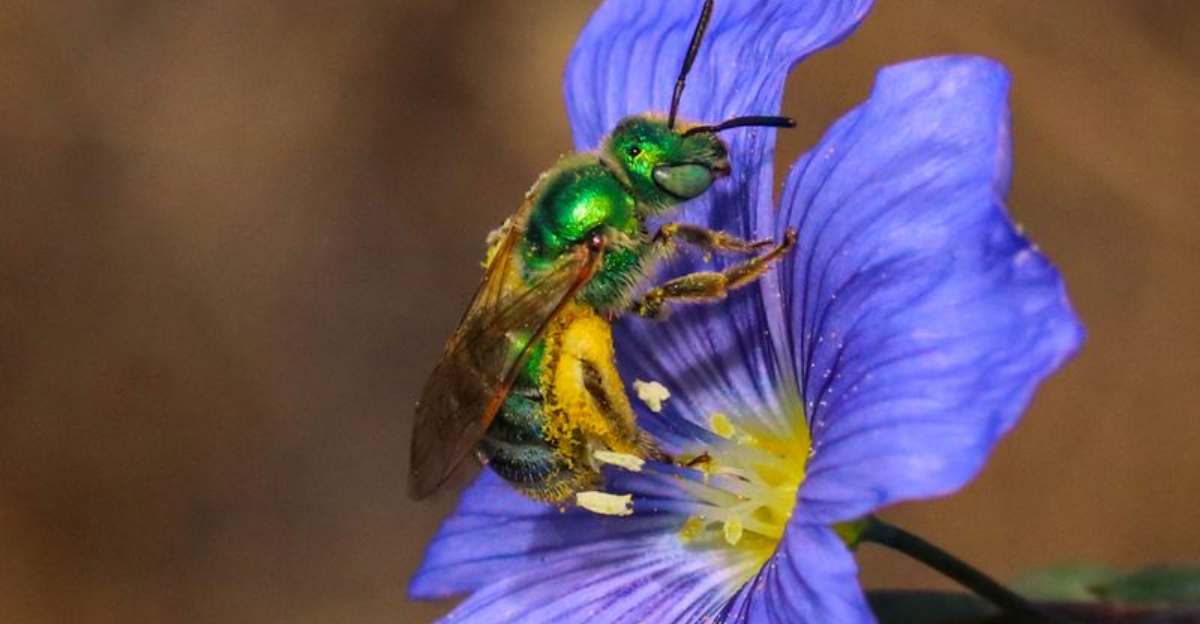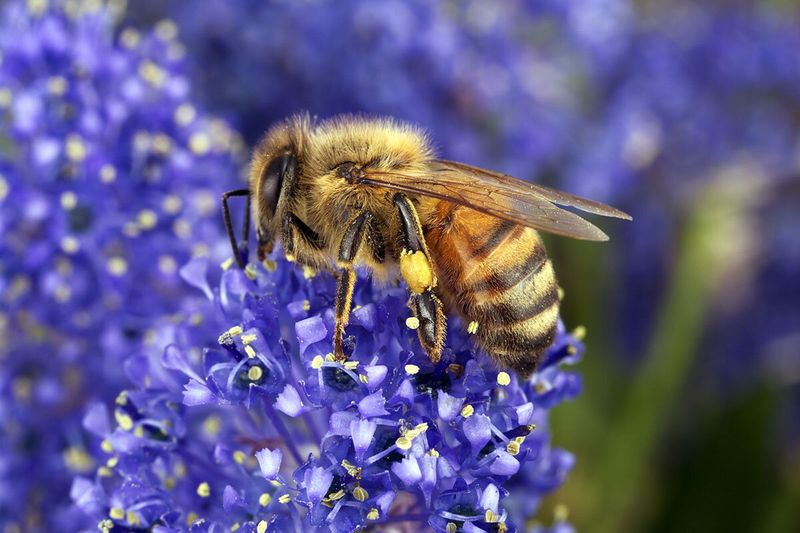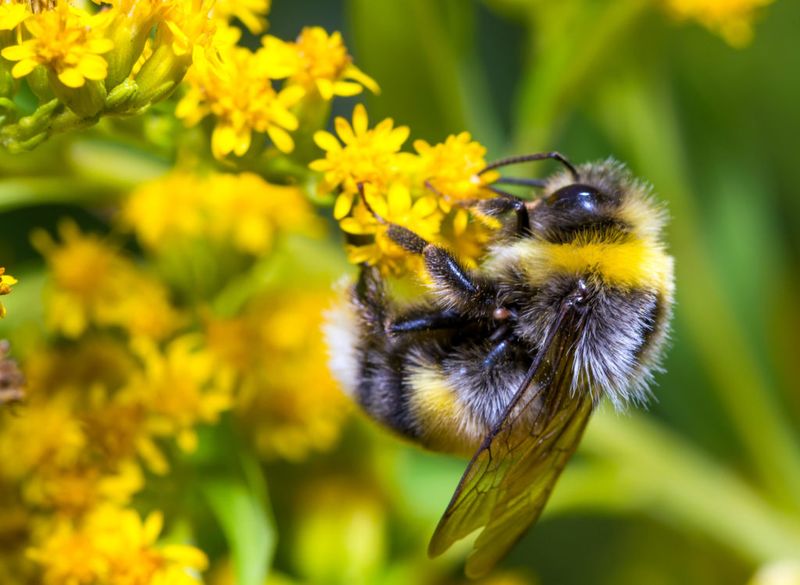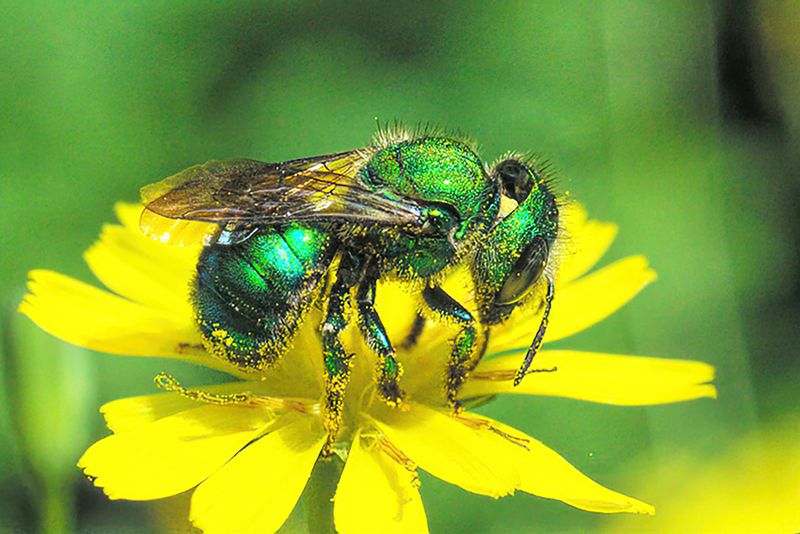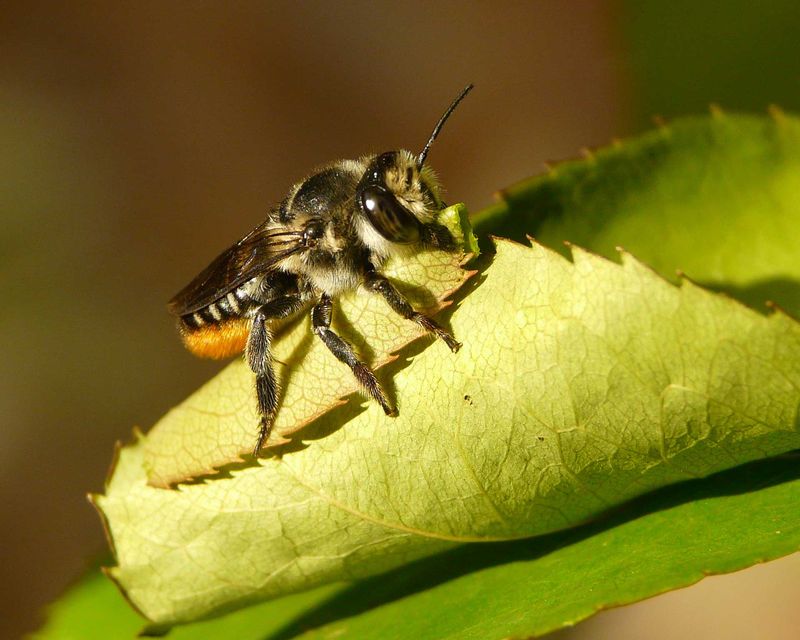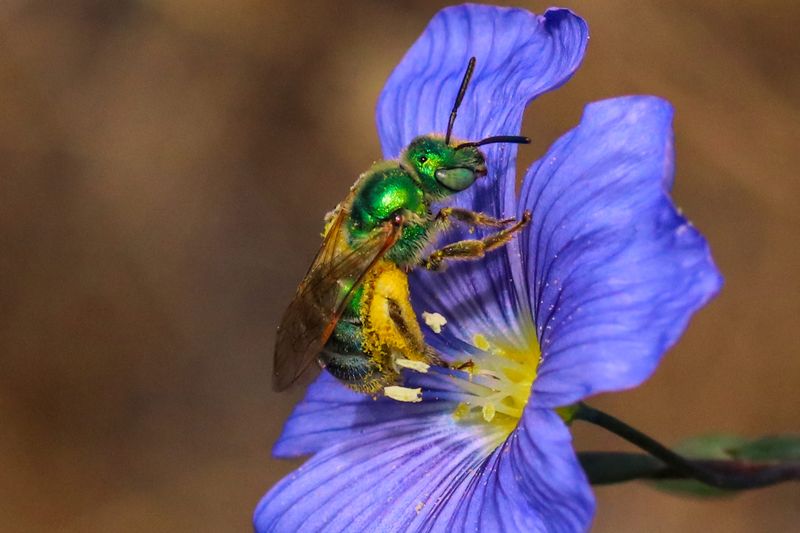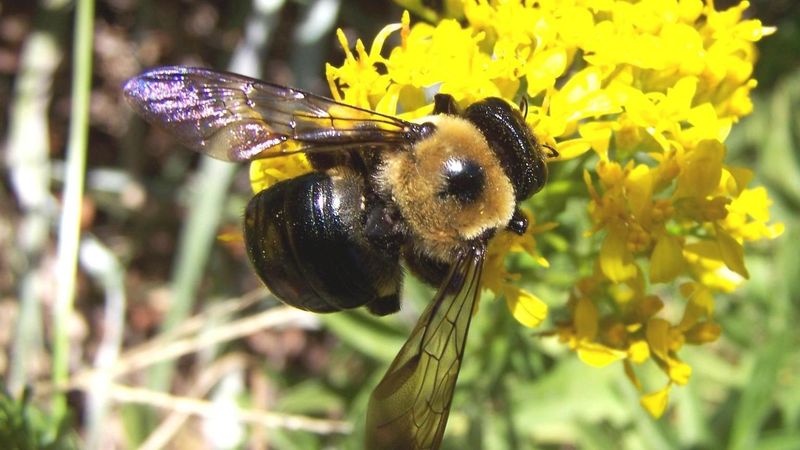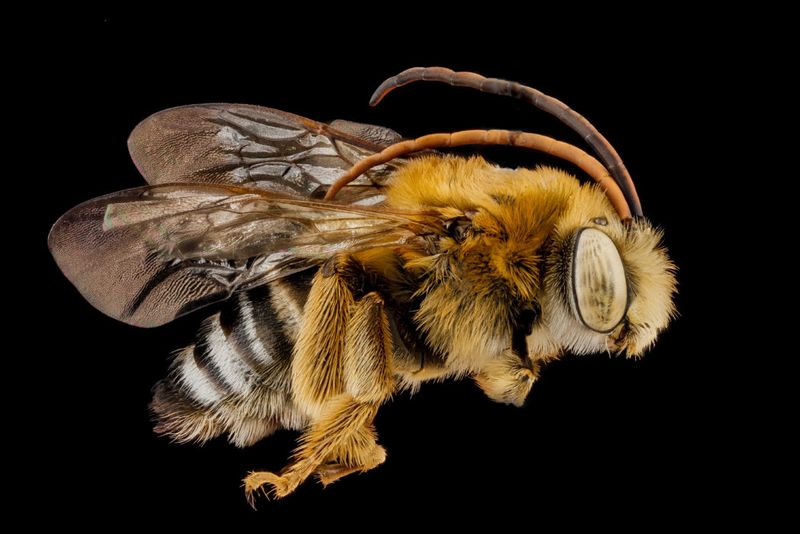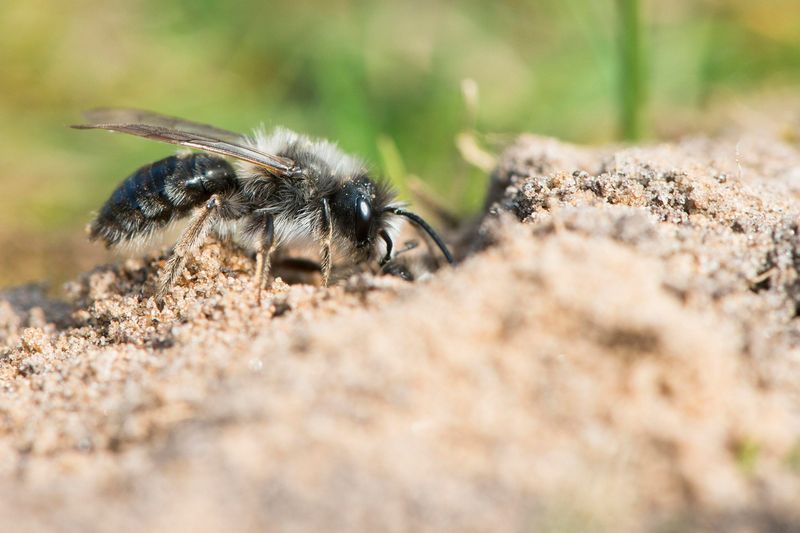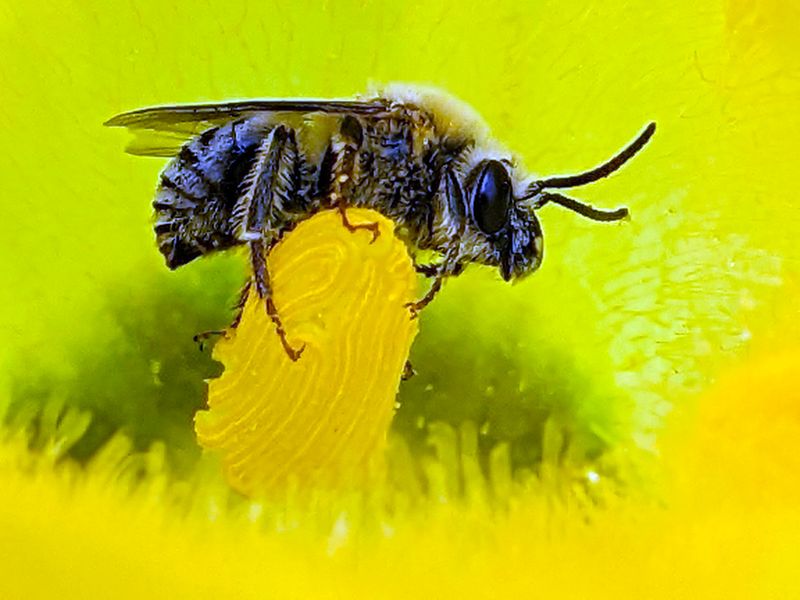Gardening enthusiasts know that a flourishing garden isn’t complete without the gentle hum of bees. These buzzing pollinators are not just important for their role in nature but also for their specialized talents in pollinating specific plants.
From the well-known honeybee to the lesser-known squash bee, each species brings its own charm and expertise to your garden. Here, we explore ten bee species that are garden must-haves, offering both beauty and bounty.
Whether you’re cultivating fruits, vegetables, or flowers, these bees play a crucial part in making your garden thrive.
1. Honeybee (Apis mellifera)
Buzzing from flower to flower, honeybees are the undeniable champions of pollination. With their social nature and gentle disposition, they diligently collect nectar while pollinating your garden. Honeybees thrive in colonies, creating intricate hives dripping with honey.
Their ability to communicate through dance is as fascinating as it is effective, ensuring the colony’s survival. These bees are generalists, meaning they pollinate a wide variety of plants, making them indispensable in any garden.
Encouraging honeybees means not only boosting your garden’s productivity but also supporting biodiversity. Consider planting bee-friendly flowers to attract these lovely workers.
2. Bumblebee (Bombus spp.)
With their fuzzy bodies and deep hum, bumblebees are the gentle giants of the bee world. Courageously visiting plants that require a bit more muscle, they perform what’s known as “buzz pollination.” This unique technique involves vibrating their bodies to release pollen from deep within flowers.
Gardeners love bumblebees for their efficiency in pollinating tomatoes, peppers, and berries. Unlike honeybees, bumblebees are capable of working in cooler temperatures and lower light conditions.
Their endearing, bumbling flight pattern makes them a charming addition to any garden. Creating nesting habitats can encourage these helpful visitors to stay.
3. Mason Bee (Osmia spp.)
Mason bees, with their shimmering green or blue hues, are solitary yet mighty pollinators. Known for their efficiency, they are particularly adept at pollinating fruit trees like apples and pears.
Unlike social bees, mason bees do not produce honey or live in large colonies. Instead, they nest in small holes, using mud to partition their egg chambers. This behavior not only makes them non-aggressive but also incredibly fascinating to observe.
These bees can pollinate up to 100 times more flowers than honeybees, making them invaluable in early spring gardens. Providing nesting tubes can support their thriving presence.
4. Leafcutter Bee (Megachile spp.)
Known for their precision, leafcutter bees are the architects of the bee world. These bees clip neat circles from leaves, using them to craft their nests. This behavior might seem destructive, but it causes minimal harm to plants.
Leafcutter bees are excellent pollinators, particularly for flowers and vegetables. Their solitary nature means they don’t live in hives but in individual nests, making them easygoing garden guests.
Encouraging these bees can lead to a more vibrant, productive garden. Planting nectar-rich flowers and providing nesting materials can make your garden a welcoming home for these interesting pollinators.
5. Sweat Bee (Halictidae family)
Sweat bees may be small, but their role in the garden is significant. Often metallic green or blue, these tiny bees are drawn to human sweat, which provides them with necessary salts.
They are adaptable pollinators, thriving in various environments from urban gardens to wild meadows. Sweat bees may not live in large colonies, but their numbers make them a pollination powerhouse.
Creating a diverse garden with plenty of flowering plants can attract these colorful bees. Their presence ensures that even the smallest blooms receive attention, fostering a balanced ecosystem.
6. Carpenter Bee (Xylocopa spp.)
Larger than most bees, carpenter bees sport glossy black bodies with vibrant yellow markings. Their love for wood can make them a garden curiosity, as they bore into wooden structures to lay eggs.
Despite their reputation as wood nuisances, carpenter bees are efficient pollinators, especially for open-faced flowers. Unlike termites, they don’t consume wood, and their drilling rarely causes structural damage.
Observing their solitary nature offers insight into this unique bee’s world. Providing alternative nesting sites, like untreated wood or bamboo, can prevent them from choosing your deck as a home.
7. Long-Horned Bee (Melissodes spp.)
True to their name, long-horned bees boast conspicuously long antennae, especially on males. These summer specialists have a penchant for sunflowers and other large blooms.
With a preference for open, sunny spaces, long-horned bees are a summer staple in many gardens. Their energetic foraging habits make them effective pollinators for various native plants.
Their preference for specific flowers means they play a vital role in maintaining biodiversity. By planting a variety of summer blooms, you can create a haven for these intriguing bees and watch them thrive.
8. Mining Bee (Andrena spp.)
Emerging in early spring, mining bees are among the first pollinators to visit gardens each year. Their gentle nature is matched by their industriousness as they dig small tunnels in the ground to nest.
These bees are adept at pollinating fruit trees and early blooming wildflowers. Unlike more aggressive bees, mining bees are solitary and non-aggressive, making them safe around children and pets.
Encouraging these bees involves minimal effort—just provide undisturbed patches of soil and early-flowering plants. Their presence in the garden signifies the start of a new growing season.
9. Blue Orchard Bee (Osmia lignaria)
Blue orchard bees are the unsung heroes of the orchard world. Their striking blue color makes them a standout, and their pollination skills are unmatched for crops like apples, almonds, and cherries.
Unlike honeybees, blue orchard bees work alone, creating nests in narrow cavities. They are non-aggressive, focusing solely on their pollinating tasks.
These bees can be more effective than honeybees when it comes to orchard crops, making them a valuable addition to gardens. Providing nesting materials like hollow reeds can support their vital role in spring pollination.
10. Squash Bee (Peponapis spp.)
True to their name, squash bees specialize in pollinating squash, pumpkins, and gourds. Their early morning activity aligns perfectly with the blooming patterns of these plants.
Squash bees are solitary and nest in the ground, often near the plants they pollinate. Unlike honeybees, they do not produce honey, focusing all their energy on pollination.
Their presence ensures a bountiful harvest of squash and pumpkins, making them indispensable for gardeners growing these crops. Encouraging these bees involves planting plenty of squash plants and leaving some soil undisturbed for nesting.
